COMMUNITY EPICENTRE OP-ED
The ‘market square’ in South Africa and Colombia — a universe of potential unity to explore
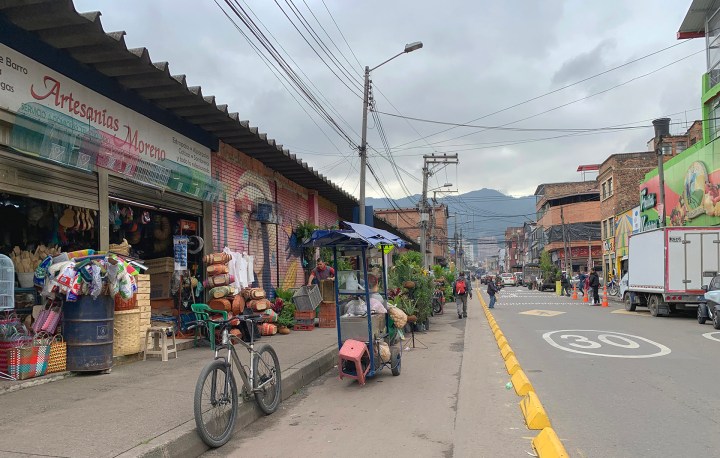
Markets can support community links in contexts that would otherwise be difficult to build because of spatial geography and disconnect across communities — something South Africa could greatly benefit from.
Hernan, a vendor of fresh fruit and vegetables, started working at the “Twelfth of October” food market in Bogotá, Colombia, in 1979. Back then he says there weren’t so many big supermarket chains, and his sales went a long way. Nonetheless, the market has improved a lot over the past years, especially since the space and its infrastructure have been renovated. The market was constructed originally in 1952 and is one of 19 ‘market squares’ (or food markets) on public land, supported through a food market programme by a unit of the local government administration called the Institute for Social Economy (Instituto Para La Economía Social — Ipes).
Bogotá, Colombia’s capital city with nearly 10 million people, stretches from north to south along the Andes’ eastern corridor, with the city becoming considerably poorer the further south it goes. Market squares — as the name suggests — play a crucial role in the life and culture of every neighbourhood, the broader food system, and the economy.
Indeed, the markets are “cultural epicentres” as Francisco Rodriguez from Ipes explains, where communities themselves develop around food — in the market, there is an “entire series of events associated with food”, the preparation, the conversation, and the environment. For Francisco, the market is both a “social and cultural experience and also a sensory experience — the smells, the colours, the flavours.”
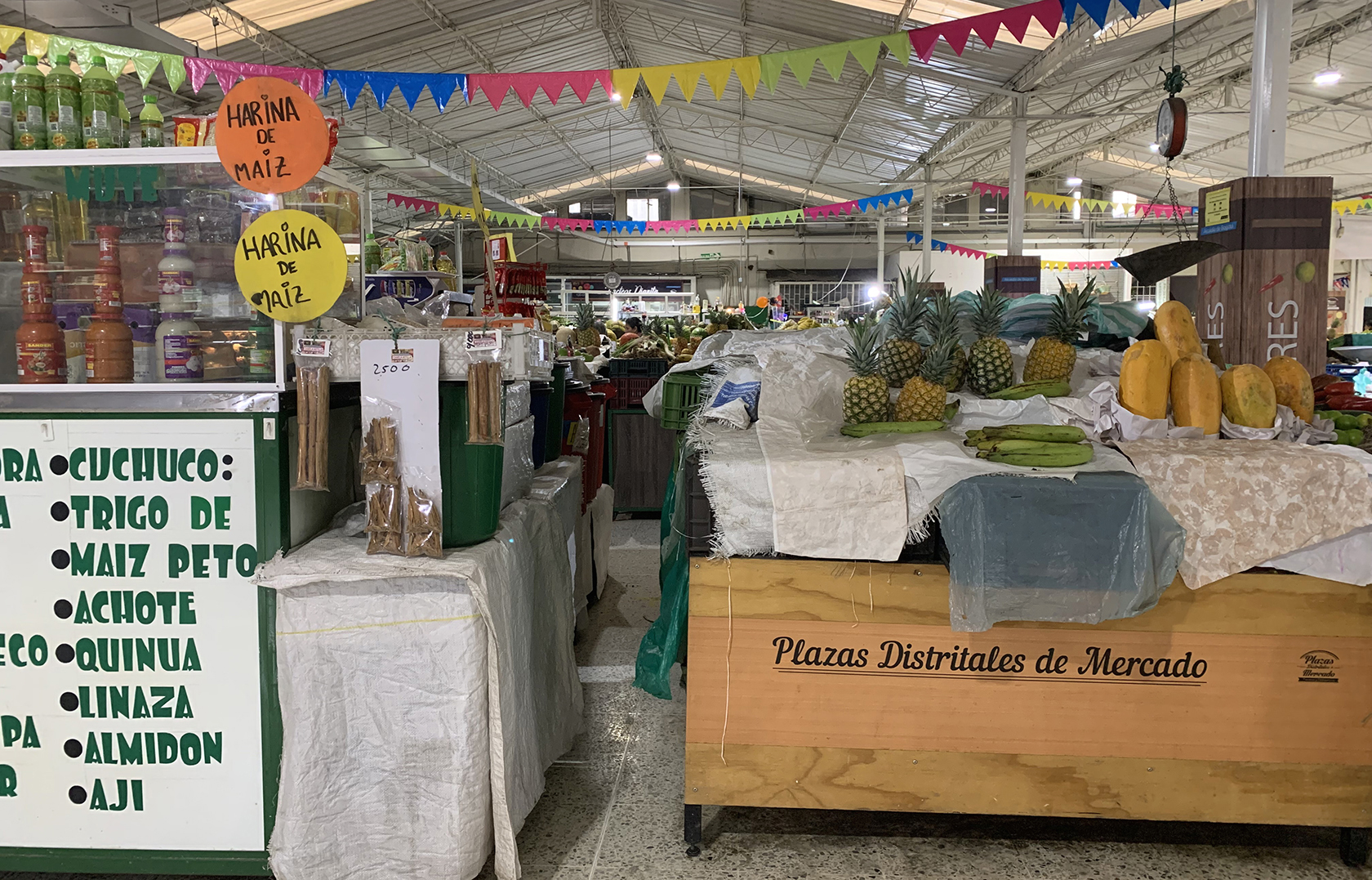
There is great diversity in fresh fruit in Colombia and they are one of the key features at most markets. (Photo: Local South)
The market as an expression of its neighbourhood
In the southern Bogota district of San Cristobal, the “20th of July” market has existed for around 50 years. San Cristobal is amongst the city’s four districts with the lowest household incomes.
Dora has been working at the market for 30 years. She sells a range of products, particularly medicinal plants and herbs. She says the economy is tough right now. But on the weekends the market is a draw for the huge crowds that come to the well-known church, Divino Niño. People make pilgrimages to the church from all around the region and even from outside of the country and the market serves these crowds on weekends. There is also now a pop-up farmers market during the weekends with produce coming directly from surrounding small-scale farmers.
Still, on a Thursday morning, the market is bustling, selling a wide variety of products — fish, meat, vegetables and other products. They also have a canteen serving cooked food. Many vendors, like Dora, have been here for decades.
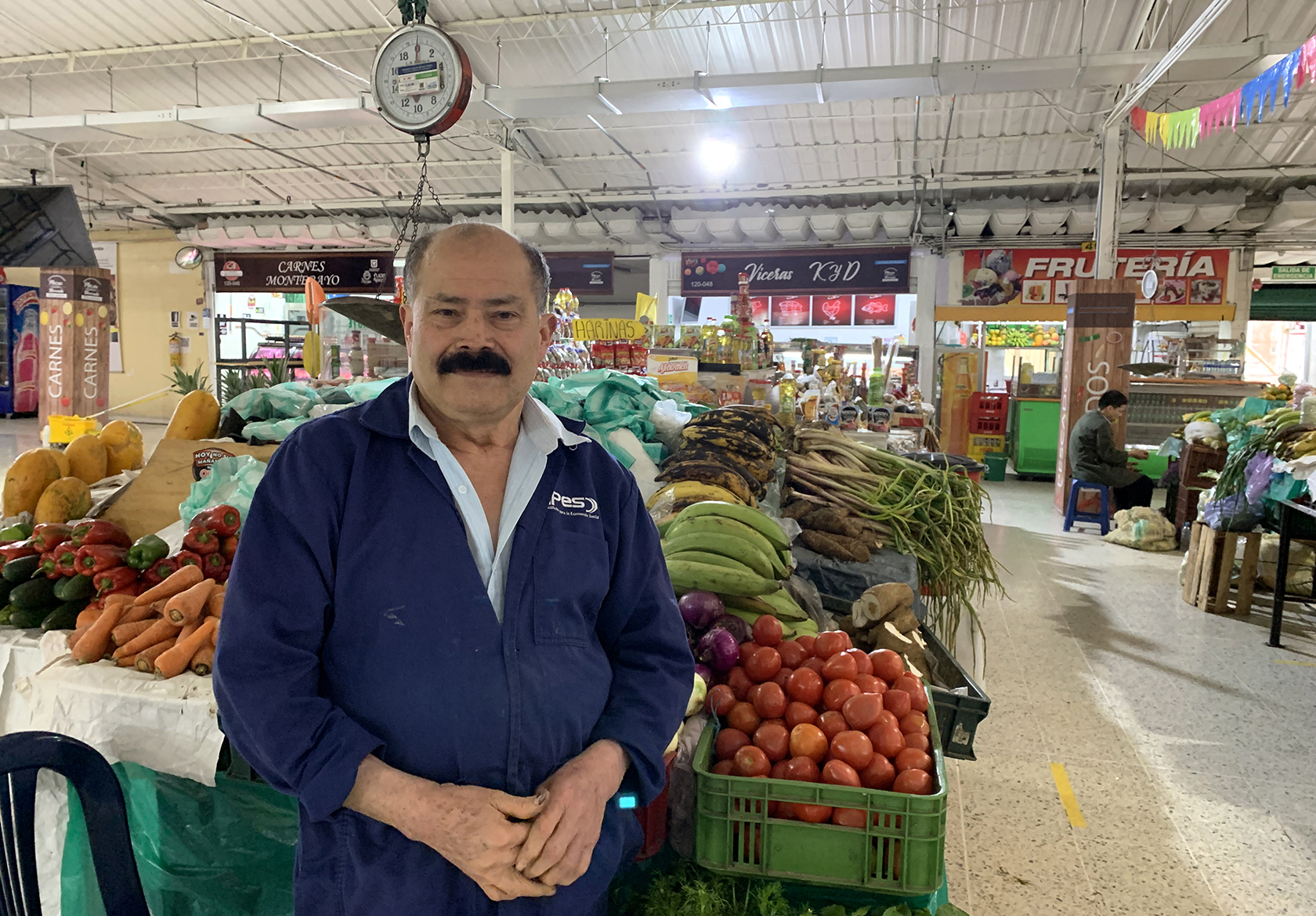
Hernan has been trading at 12 Octubre for more than 40 years, even before the market became part of the Ipes network of markets. (Photo: Local South)
“Every market square is a totally different universe,” says Francisco. And indeed, this is clear. The Perseverancia market, in the neighboorhood of La Perseverancia is today one of the most popular cooked food markets in the city. In an area once notorious for being dangerous, the market has developed into one offering a range of cuisines from Colombia — from Pacific seafood dishes to famous Bogotano soups. It received international fame when it was featured in the Netflix series Street Food Latin America. On weekends queues stretch out the door to have a meal at one of the more popular stands inside. On any given day, a range of people from all over the city as well as people who live and work in surrounding neighbourhoods will be eating there.
While La Perserverancia is focused on gastronomy, others like the 12th of October market where Hernan is based are more about fresh food and crafts. The La Concordia market in the historical centre is more geared towards tourism. The point is that each has its focus depending on where it is, and the needs, expressions, and history of that neighbourhood.
Visit Daily Maverick’s home page for more news, analysis and investigations
As Andrés Morales from Ipes explains, each of these markets contributes to the telling of the complex history and present of Colombia. Even the names of the markets signify key dates, events or people in the country. The 20th of July market is itself named after the date of Colombia’s declaration of independence, which occurred on that date in 1810.
The advent of large supermarket chains and concentration in food production and supply means that local food markets in Colombia have struggled, as has access to fresh, healthy food as well as native types of food that have disappeared through commercial concentration.
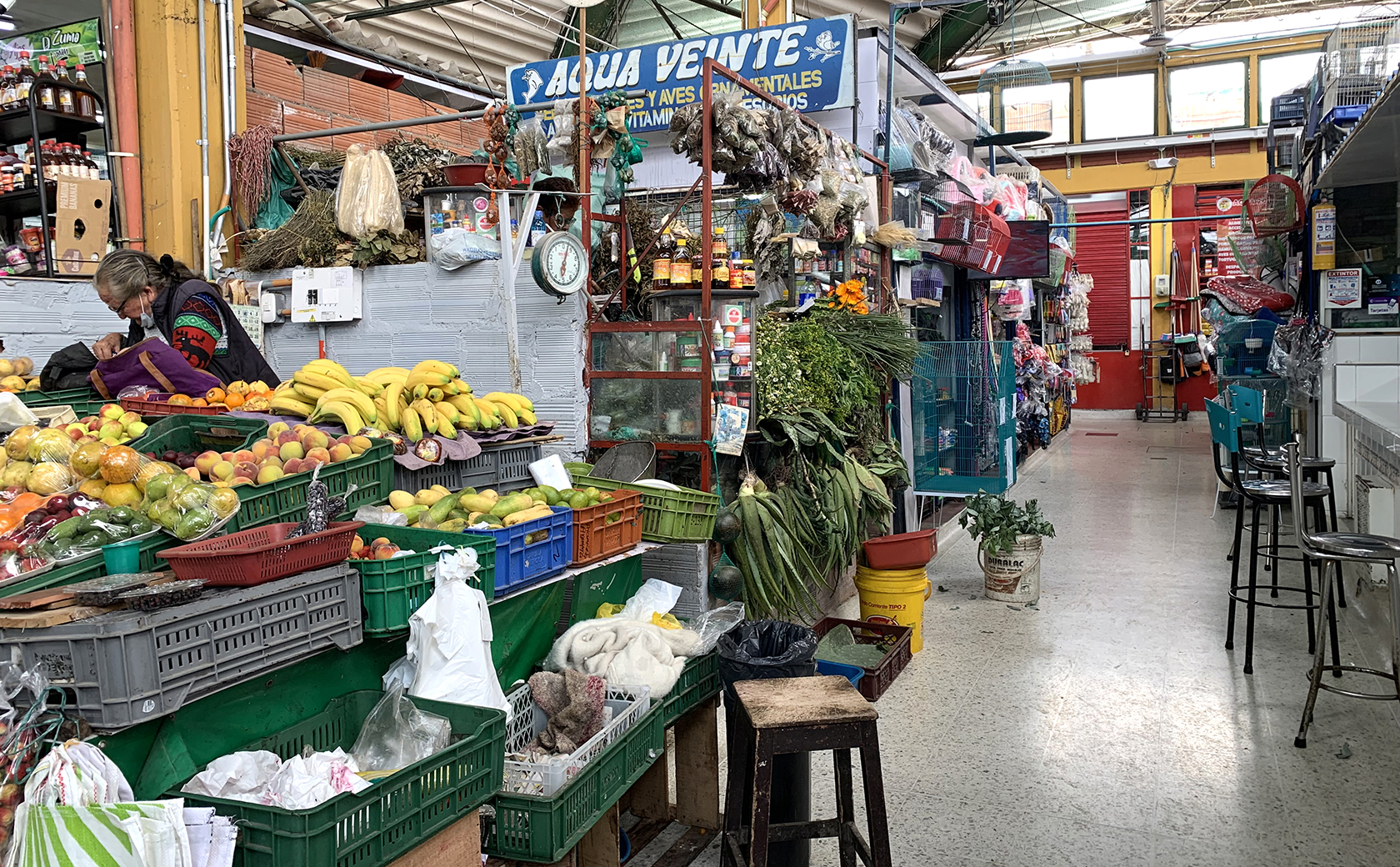
Markets vary in size and style, some like the 20 de Julio market is relatively small and because of its proximity to a famous church sells religious items. (Photo: Local South)
Through various elements of support including training and infrastructure, the idea is to strengthen the markets and incentivise and promote the consumption of food that both shifts the food system and engages food as a historical and cultural artefact, to recover or maintain products that may be lost in the largescale concentration of food supply. Certainly, not a simple or perfect response to food security, but one that seems to underscore the value of Colombian food diversity and richness in a way that aligns with existing traditions.
The ‘market square’ in South Africa
The type of smaller-scale fresh, direct-to-consumer, produce markets seen in Bogotá are hard to find in South Africa. According to Kurt Ackermann from the SA Urban Food and Farming Trust, the country stands out amongst the rest of the African continent as a place where retail and large supermarkets have almost completely replaced any other food source.
It is no coincidence given the history of colonisation and later apartheid during the 20th century which intentionally broke the social fabric necessary for communities, let alone local markets, to flourish.
Dr Gareth Haysom, Researcher at the African Centre for Cities, explains that apartheid aimed to control and deliberately ensure rural and communal areas were not productive in order to guarantee mining labour. While markets were places where people convened and where group politics were formed, apartheid control led to the institution of the centralised ‘municipal market’ usually under the control of municipalities.
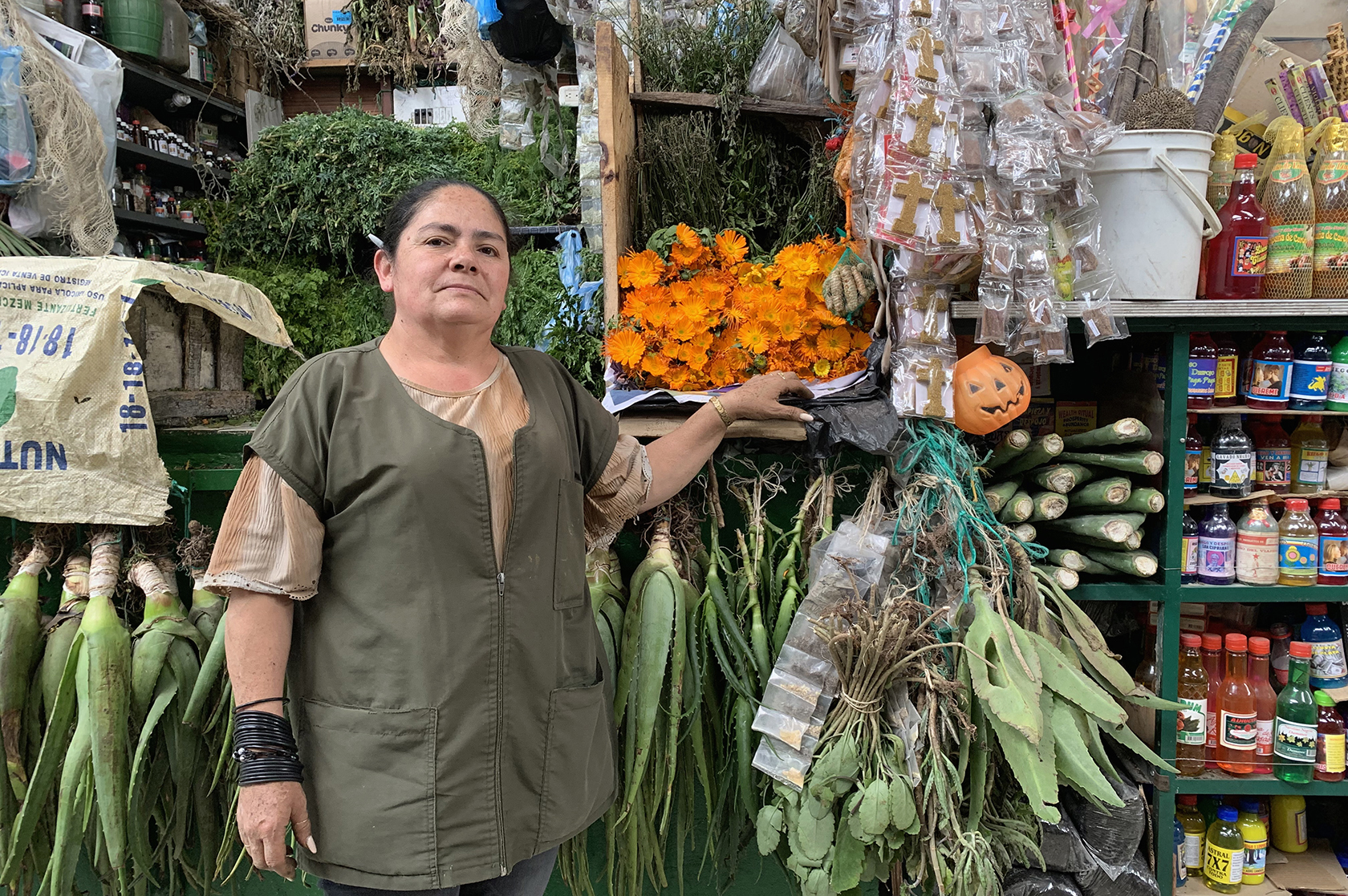
Dora sells medicinal plants at the 20 de Julio market. She has been selling there for decades. (Photo: Local South)
There are 21 of these formal and large Fresh Produce Markets across South Africa as they are formally known and legally defined. The Cape Town Market in Epping is one of them. But the scale and purpose of these markets, which tends towards largescale commercial farming supply and bulk sale, are very different to the neighbourhood-based market squares in Bogotá and other cities that exist alongside largescale supplier markets in these cities.
A closer comparison is the Yeoville Market in Johannesburg which was tragically hit by a major fire earlier this year that activists linked to xenophobia and to a lesser extent the more touristic, high-end markets that have popped up across major South African cities over the past decade; but they still offer something different to what a local market could provide to each neighbourhood.
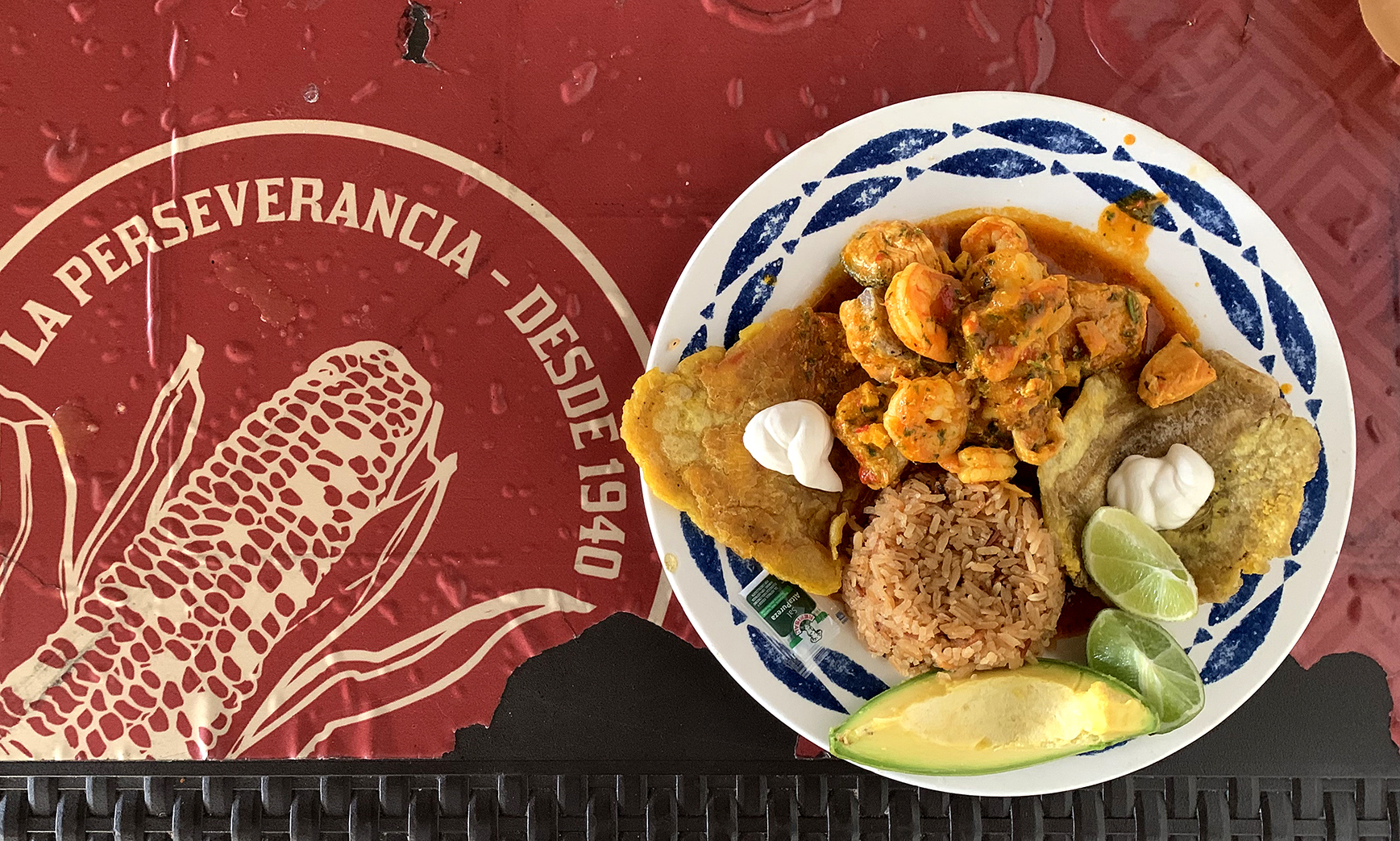
A traditional meal from the Pacific coast containing fish, plantains, coconut rice and avocado is one of the many offerings at Perseverancia market. (Photo: Local South)
And while informal vendors and spazas could play an important role in the development of market spaces, the government response has tended to be inconceivably either law enforcement control and confiscations of goods or a lack of investment in places where such vendors could thrive.
Ackermann explains that with some exposure and information, there would also be a better understanding that such markets would not represent a threat to large retailers and that instead, they could and would become social and not just commercial hubs.
Market squares in the Colombian context, might not be the exact model that works for South African cities, but they show how the market can support community links in contexts that would otherwise be difficult to build because of spatial geography and disconnect across communities. With the right approach, they can become a place through which to build neighbourhoods, experiences, and connections, not to mention get fresh, healthy, delicious food. DM/MC
Marcela Guerrero Casas and Dustin Kramer are co-founders of Local South. Located between Cape Town and Bogotá, they work across some of the central and common issues facing African and Latin American cities today, while using dynamic and locally driven approaches that help build bridges across the Global South.
This work was supported by Heinrich Böll Stiftung Southern Africa.




















 Become an Insider
Become an Insider
Comments - Please login in order to comment.